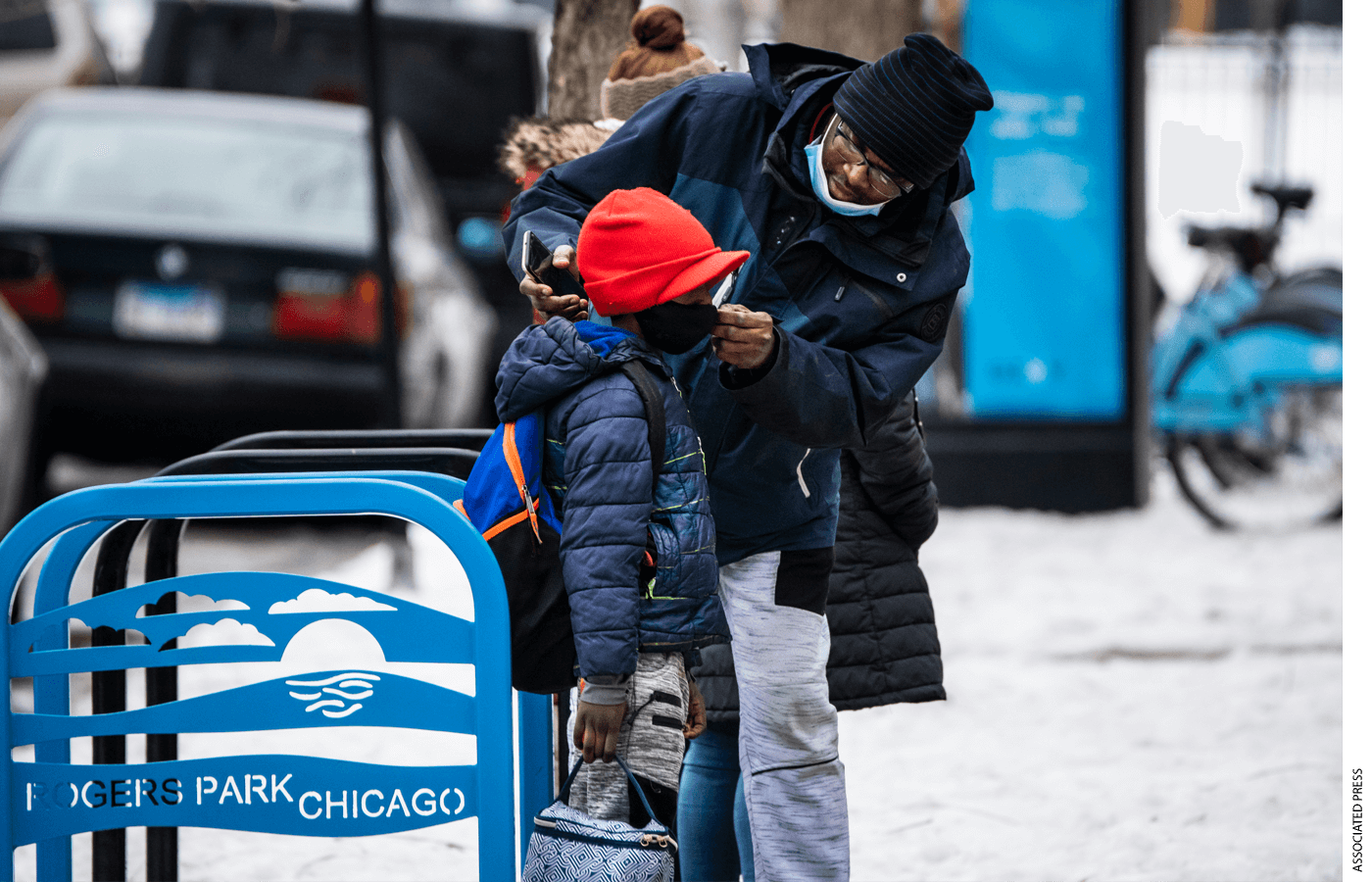
As this issue of Education Next goes to press, the nationwide spike in Covid-19 cases caused mainly by the Omicron variant has begun to abate. In Massachusetts and other Northeast states, where Omicron first took hold in the United States, total cases and cases among students and staff at schools have both dropped precipitously. Yes, hospitalization rates remain high and, in many places, hospitals are dangerously close to capacity. This pandemic has defied expectations too often to permit confident assertions about its future. It seems possible, however, that we’re entering a new stage in the way school systems are responding to the pandemic—one that, with the 2022 midterm elections looming, will lead to a gradual loosening of restrictions even in the most vigilant of blue states.
Though we may have reached a turning point in the pandemic’s impact on education, the latest spike in the disease has already wrought another spate of disruption. As Omicron surged, the Chicago Teachers Union demonstrated once again who runs the public schools in the nation’s third-largest city by forcing a four-day closure over the objections of the city’s mayor and school superintendent. On the national front, the tracking service Burbio reported that, over the first three weeks of January, more than 5,700 K–12 schools closed or went virtual each week, on average. But these shutdowns differed from those that kept many schools fully remote throughout the 2020–21 school year. The 2022 closures were driven mostly by staff shortages rather than false hopes of containing the virus’s spread. A growing number of jurisdictions are now deemphasizing or discontinuing contact tracing in schools, noting the low number of positive cases such efforts identify and the burden they place on school staff.
Unlike many other viral diseases, Covid-19 spares most children from the worst of its physical harm. Yet our collective failure to adjust to this reality has forced children to endure serious damage to their learning. Mounting data on students’ educational progress make this clear. State test results from spring 2021 revealed a massive setback in the development of students’ literacy and numeracy. High school graduation rates, after climbing steadily for more than a decade, fell markedly in 2021 despite an easing of degree requirements. Students’ nonacademic development has also suffered. The American Academy of Pediatrics has gone so far as to declare a national emergency in children’s mental health.
As school systems struggled to respond to the pandemic over the past two years, some families took matters into their own hands. In this issue, Daniel Hamlin and Education Next senior editor Paul E. Peterson take stock of recent developments in the world of homeschooling (see “Homeschooling Skyrocketed During the Pandemic, but What Does the Future Hold?” features, this issue). Hamlin and Peterson note that “even cautious estimates indicate a doubling of the practice during the pandemic,” with as many as 6 percent of U.S. children learning at home without simultaneously being enrolled in a public or private school, as of June 2021. What it means for students to be homeschooled is also changing, the authors note, with more families assembling a blend of online experiences, participation in informal cooperatives, and perhaps a course or two at a formal school to round out their child’s education.
This growth in homeschooling has been accompanied—and in some cases aided—by an expansion of policies promoting parental choice. At least 18 states created or expanded private-school choice programs amid the pandemic in 2021 (see “School Choice Advances in the States,” features, Fall 2021). Republican leaders in other states now seek to increase this number. Texas Governor Greg Abbott has said that “this upcoming session . . . you’re going to see a stronger, swifter, more powerful movement advocating school choice than you’ve ever seen in the history of the state of Texas.” Glenn Youngkin, the newly elected governor of Virginia, has proposed expanding the number of charter schools in the commonwealth from fewer than 10 to about 200.
A pandemic that takes the lives of more than five million people worldwide, robs millions more of the joy of social interaction, and disrupts education for months on end does not have a silver lining. If, however, the response to Covid-19 leads policymakers to provide families with more options for meeting students’ needs, that change will be a part of its legacy for us all to make the most of as we seek to repair the pandemic’s harm to our nation’s children and truly build back better.
Martin R. West
This article appeared in the Spring 2022 issue of Education Next. Suggested citation format:
West, M.R. (2022). In Omicron’s Wake. Education Next, 22(2), 5.


